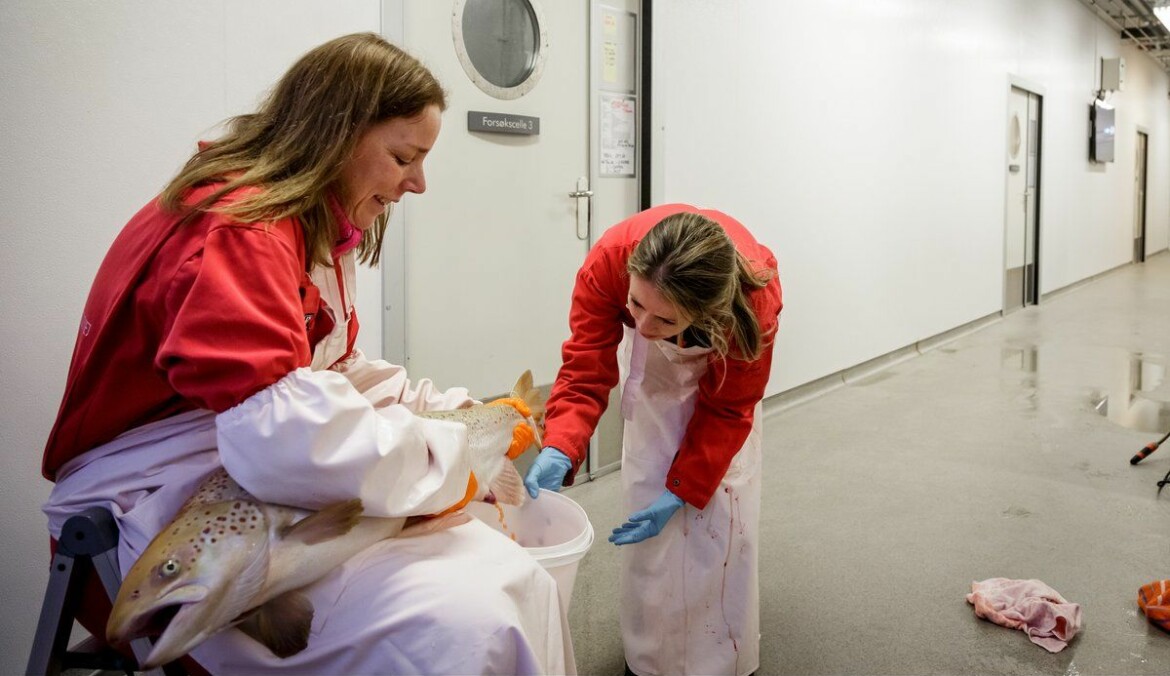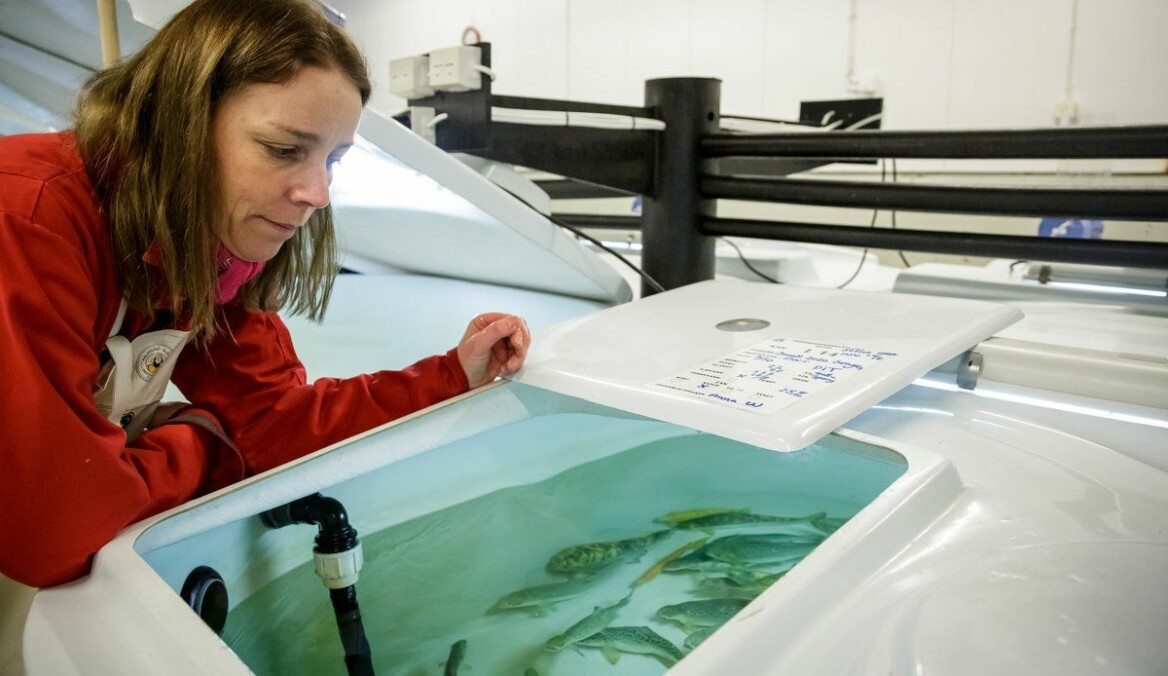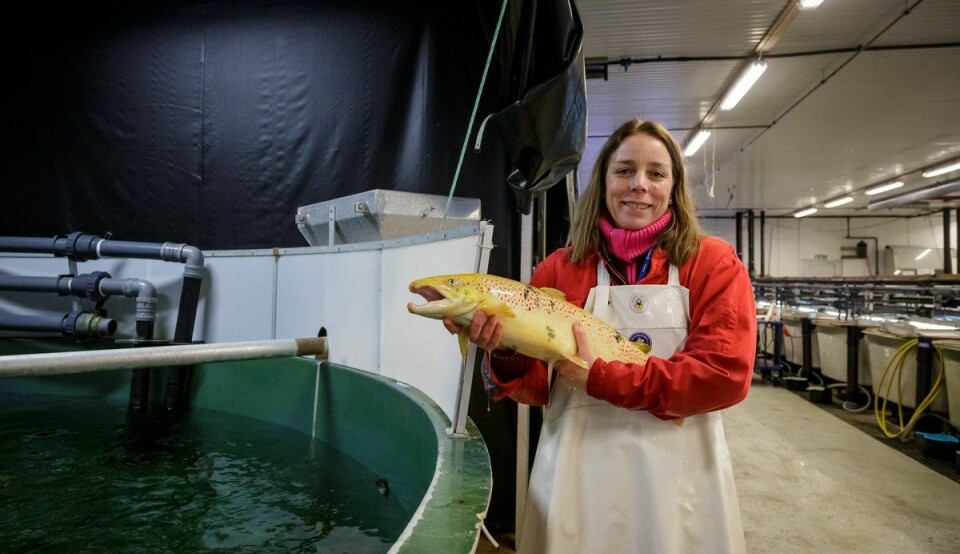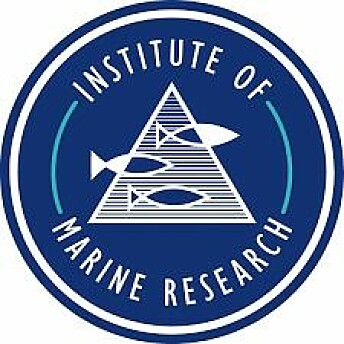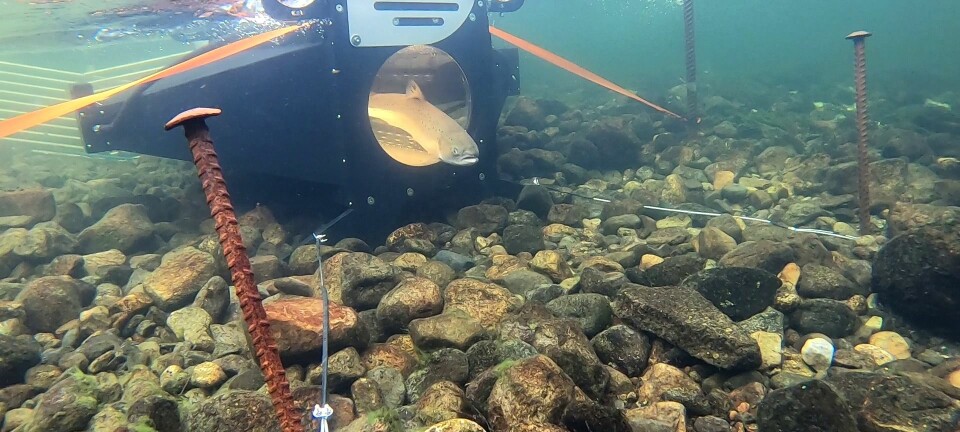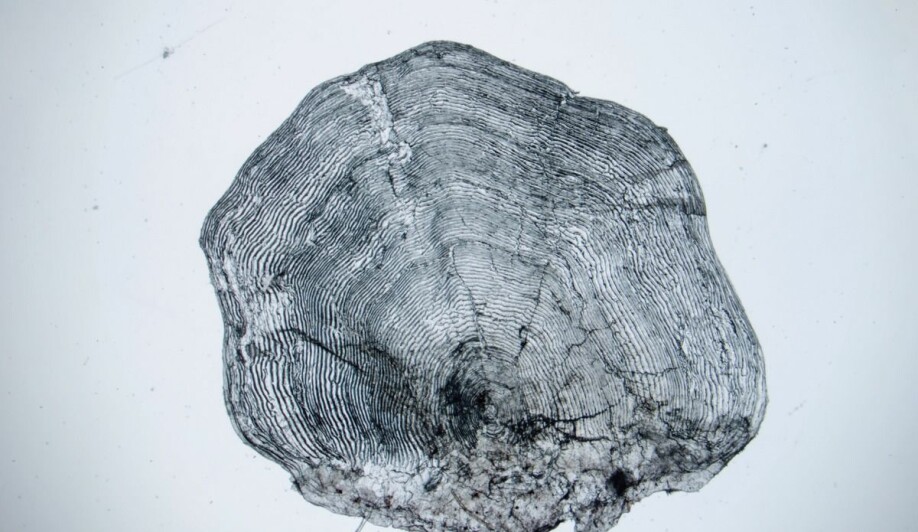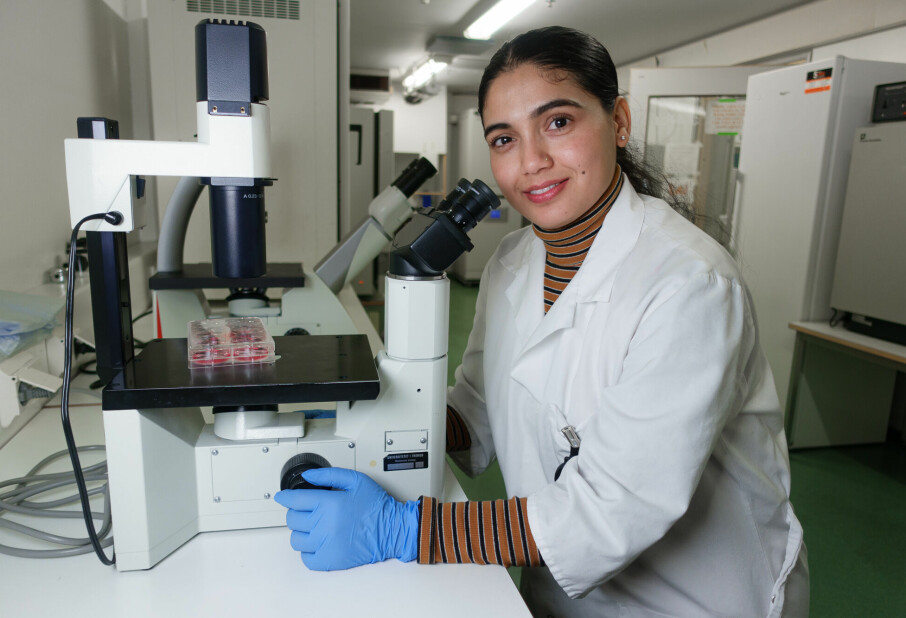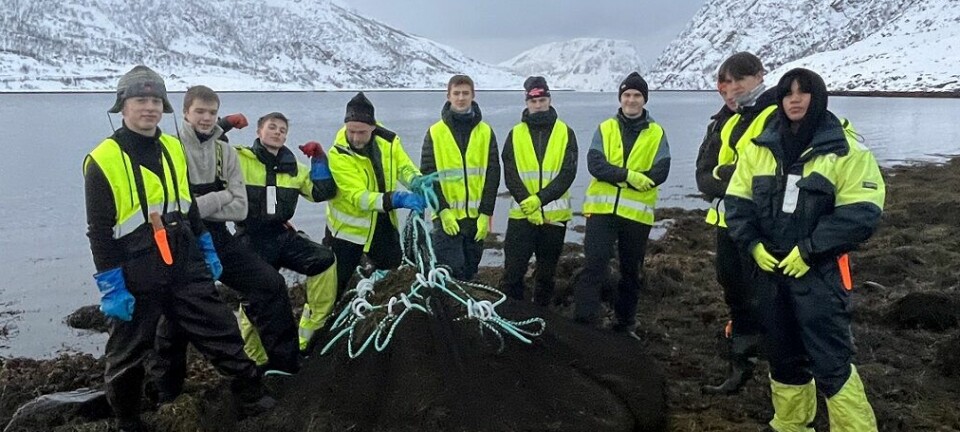This article is produced and financed by the Institute of Marine Research - read more
Using CRISPR to mass produce sterile farmed salmon and protect wild salmon
By cutting out a particular gene, scientists can make farmed salmon sterile. This prevents escaped fish from spawning with wild salmon. Now scientists have also worked out how to produce sufficient quantities of sterile salmon for commercial production.
Using sterile farmed salmon may solve the problem of escaped farmed fish interbreeding with wild fish. Scientists had already discovered a method for making the fish sterile by cutting out a gene. Now they have taken that method a step further so the fish can be mass produced.
Inheritable genetic modification
“Initially we made the fish sterile by cutting out a particular gene in every single newly fertilised salmon embryo. This method is time-consuming and cannot be used for commercial production,” explains the geneticist Anna Wargelius.
That’s why the scientists had to come up with a different method that would make it possible to produce sterile fish in large quantities:
“We concluded that the simplest way to produce enough sterile salmon is to enable some of the sterile fish to reproduce.”
In order to achieve that, the researchers had to find a way to reverse the impact of the genetic modification without removing it:
“As the goal was for the young to inherit their parents’ sterility, the parents had to be genetically sterile.”
The method has now been patented:
“We add an RNA molecule to the fish we want to use as ‘sterile parents’. This molecule contains a ‘recipe’ that means the genetically sterile fish develop germ cells. As a result, they can produce young that inherit their parents’ genetic sterility,” explains Wargelius.
Escaped fish will probably stay away from rivers
The sterile fish don’t reach sexual maturity, so they don’t behave in the same way as other salmon do when they reach that life stage.
“Since the fish don’t become sexually mature, their natural instinct to head to the rivers to spawn isn’t triggered. If they escape, they will probably not swim up the rivers where the wild salmon have gone to spawn,” she says.
Better fish welfare
The fact that the fish don’t reach sexual maturity is also good for animal welfare at fish farms.
“When salmon reach sexual maturity, they stop growing. In the wild, salmon head to fresh water when they start to sexually mature, where they cope well. Farmed salmon, on the other hand, have to remain in salt water, where sexually mature salmon are more susceptible to disease,” says Wargelius.
Using Nobel Prize-winning technique
The project to discover a good way of making farmed salmon sterile, while also ensuring that they could reproduce if desirable, started back in 2016.
“The project was made possible by the development of the CRISPR technique, which allows you to directly ‘cut’ from, and ‘paste’ into, DNA,” says Wargelius.
When they started their research, Wargelius’ team were some of the first people in Norway to start using the newly developed CRISPR technique. This year, the scientists behind the technique were awarded the 2020 Nobel Prize in Chemistry.
“This technique enables us to make the industry more sustainable, by preventing genetic impacts on wild fish and also improving animal welfare at fish farms,” says Wargelius.
How scientists edit genes:
Defined as genetically modified
“Although we don’t give the fish any new characteristics, and only take away their ability to reproduce, in Norway these fish are defined as genetically modified,” says Wargelius.
Consequently, if someone wants to produce fish of this kind, they must apply for a permit.
Reference:
Hilal Güralp et.al.: Rescue of germ cells in dnd crispant embryos opens the possibility to produce inherited sterility in Atlantic salmon. Scientific reports, 2020.







